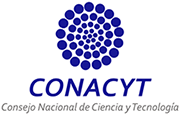Development models and restructuring of the periurban road network in the city of Zacatecas-Guadalupe [CZG], 1971-2018
DOI:
https://doi.org/10.20983/decumanus.2023.1.3Keywords:
Development models, road network, capital accumulationAbstract
In the early 1980s, the closed economy development model with state assistance was restructured to make way for open trade and free market imports. The urban structure of the capital of Zacatecas soon suffered from the socio-territorial effects, and this encouraged the rearrangement of the road network in the periurban Zacatecas-Guadalupe. That fabric used for the extraction of supplies from the countryside to the city for consumption, lost importance with the new development model when redistributed through primary roads, that lead to higher-ranking urban centers.
The objective of this research is to analyze, based on road networks, the process of transformation of the peri-urban space of the City of Zacatecas-Guadalupe [CZG] during the period 1971 to 2018. In two stages was organized the methodological process. In the first, in a Geographic Information Systems (GIS) environment, topographic maps and aerial photographs were analyzed; from which gaps, sidewalks and dirt roads, and highways were identified and digitized. The information was organized in four periods: 1971-1985, 1990-1998, 2000-2011, and 2018. The second stage aimed at the spatial analysis of the road network in the peri-urban overlap, the inputs for its execution were those generated in the previous process. It is concluded that the demands of the current development model, based on the confluence of private capital interests to expand the city, they used the existing road network and intersections near the CZG as tools for development, thereby promoting the emergence of new forms of organization of space and landscape.
Downloads
References
Castells, M. (2014). La cuestión urbana [1974], (trad. de Irene C. Oliván,15.. ed.). Siglo Veintiuno Editores.
EarthExplorer. (s. f.). [Interfaz para recuperación de imágenes de satélite]. Recuperado el 1 de septiembre de 2021 de https://earthexplorer.usgs.gov/
Garza, G. (2003). La urbanización de México en el siglo XX. El Colegio de México.
Garza, G. (1985). El proceso de industrialización en la ciudad de México. 1821-1970. El Colegio de México.
George, P. (1982a). Geografía rural. Ariel.
George, P. (1982b). Geografía urbana. Ariel.
González, G. (2013). Vivienda nueva y deshabitada en Zacatecas-Guadalupe, 1990-2010. Investigación Científica, 7(2), 2-13.
Greene, R. (2005). Pensar, dibujar, matar la ciudad: orden, planificación y competitividad en el urbanismo moderno. EURE, 31(94), 77-95. https://doi.org/10.4067/S0250-71612005009400005
Harvey, D. (2015). Seventeen Contradictions and the end of Capitalism. Profile Books.
Harvey, D. (2013). Ciudades rebeldes: Del derecho de la ciudad a la revolución urbana, (trad. de Juanmari Madariaga). Akal.
Harvey, D. (2007). Espacios del capital: Hacia una geografía crítica. Akal.
Hinkelammert, F. J. (2003). Estancamiento dinámico y exclusión en la economía mundial. En L. J. Álvarez Lozano (Ed.), Un mundo sin trabajo, pp. 65-78. Dríada/Colegio de Estudios de Posgrado de la Ciudad de México.
Imagen Zacatecas. (5 marzo 2018). Así nació la planta cervecera más grande del mundo. Recuperado 19 de octubre de 2020 de https://imagenzac.com.mx/capital/asi-nacio-la-planta-cervecera-mas-grande-del-mundo/
Instituto Nacional de Estadística y Geografía (INEGI). (2020). Censo Población y Vivienda 2020. Recuperado 1 de marzo de 2021 de https://www.inegi.org.mx/programas/ccpv/2020/#Tabulados
Isaac, J., y Ortiz, A. (2019). Dinámica económica sectorial y reconfiguración territorial. En J. Gasca Zamora (coord.), Desarrollo regional en México: Actores, miradas y relatos, pp. 153-173. AMECIDER/Bonilla Artigas Editores.
Márquez, H., Delgado, R., y Pérez, O. (2006). Precarización de la fuerza de trabajo mexicana bajo el proceso de reestructuración productiva estadounidense. Revista Theomai, (14), 92-109.
Marx, K. (1975). El Capital [1872]. Siglo XXI Editores.
McKelligan, M. T. y Treviño, A. H. (2011). La ciudad y la casa propia. En Alejandro Cerda García et al. (Eds.), Metrópolis desbordadas: Poder, memoria y culturas en el espacio urbano, pp. 343-379. Universidad Autónoma de la Ciudad de México.
Parsons, T. (1975). The present status of "structural-functional" theory in sociology. En Talcott Parsons, Social Systems and The Evolution of Action Theory. The Free Press.
Parpart, J. y Veltmeyer, H. (2004). The dynamics of development theory and practice: a review of its shifting dynamics. Canadian Journal of Development Studies, 25(1).
Pérez, J. E. (2020). Acumulación de capital y expansión urbana: inserción de la población rural en la economía de subsistencia de la ciudad de Zacatecas-Guadalupe, 1988-2018. [Tesis de doctorado]. Universidad Autónoma de Zacatecas.
Pradilla, E. (1993). Territorios en crisis: México 1970-1992 (1.. ed). Universidad Autónoma Metropolitana-Unidad Xochimilco/Red Nacional de Investigación Urbana/Grupo Editorial Eón.
Prebisch, R. (1950). The Economic Development of Latin America and its Principal Problems. Naciones Unidas.
Pucha-Cofrep, F., Fries, A., Cánovas-García, F., Oñate-Valdivieso, F., González-Jaramillo, V. y Pucha-Cofrep, D. (2017). Fundamentos de SIG. Aplicaciones con ArcGis. Recuperado 23 de febrero de 2023 de https://franzpc.com/wp-content/uploads/2018/05/Manual-de-ArcGIS-10.pdf
Rodríguez, J. (2016). Análisis del Parque Industrial de Calera, Zacatecas: alcances y limitaciones de un proyecto planeado. Carta Económica Regional (83), 3-13. https://doi.org/10.32870/cer.v0i83.5862
Singer, P. (1983). Economía política de la urbanización (6.. ed). Siglo Veintiuno Editores.
Soto-Cortés, J. J. (2015). El crecimiento urbano de las ciudades: enfoques desarrollista, autoritario, neoliberal y sustentable. Paradigma Económico. Revista de economía regional y sectorial, 7(1), 127-149.
Thomas, V. y Nash, J. (1992). Trade policy reform: recent evidence from theory and practice. En Ramesh Adhikari et al. Industrial and Trade Policy Reform in Developing Countries, pp. 32-55 Manchester University Press.
Torres Vargas, G., Hernández García, S., Peréz Sánchez, J. A. y Lelis Zaragoza, M. (2002). Modernización de caminos rurales: La evaluación económica como herramienta en la toma de decisiones. Publicación técnica núm. 216, Sanfandila, Qro., p. 182. Secretaría de Comunicaciones y Transportes/Instituto Mexicano del Transporte.
Veizaga R., J. M. (2018). Caminos y automóviles en Bolivia: cambios, tendencias y correspondencias en el pasado reciente. Revista Transporte y Territorio, (18), 100-121. https://doi.org/10.34096/rtt.i18.4930
Downloads
Published
How to Cite
Issue
Section
License
Copyright (c) 2023 DECUMANUS. REVISTA INTERDISCIPLINARIA SOBRE ESTUDIOS URBANOS

This work is licensed under a Creative Commons Attribution-NonCommercial-ShareAlike 4.0 International License.











